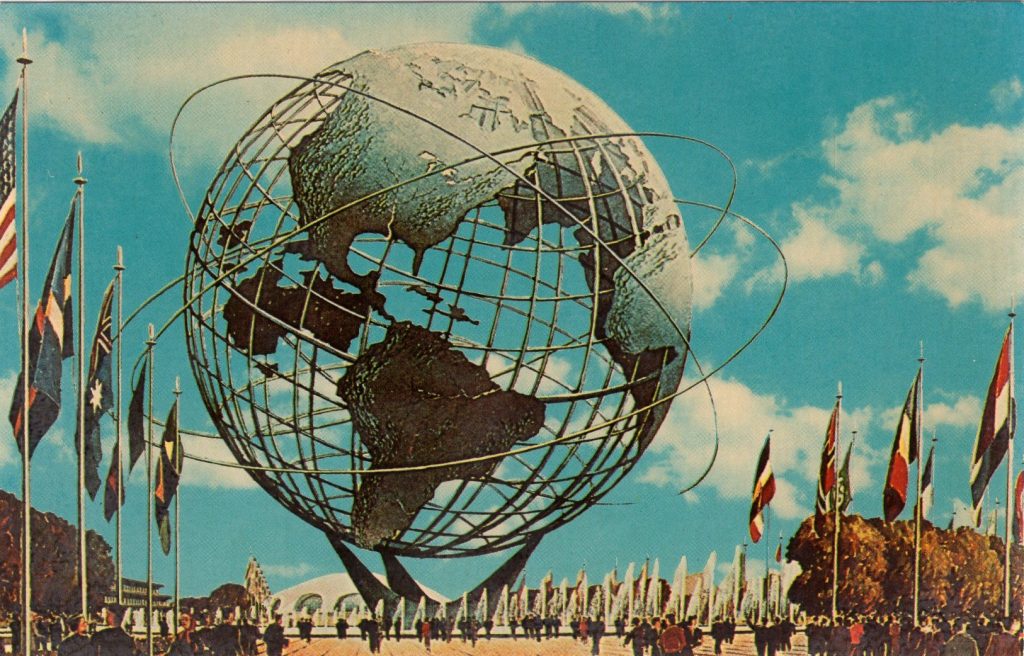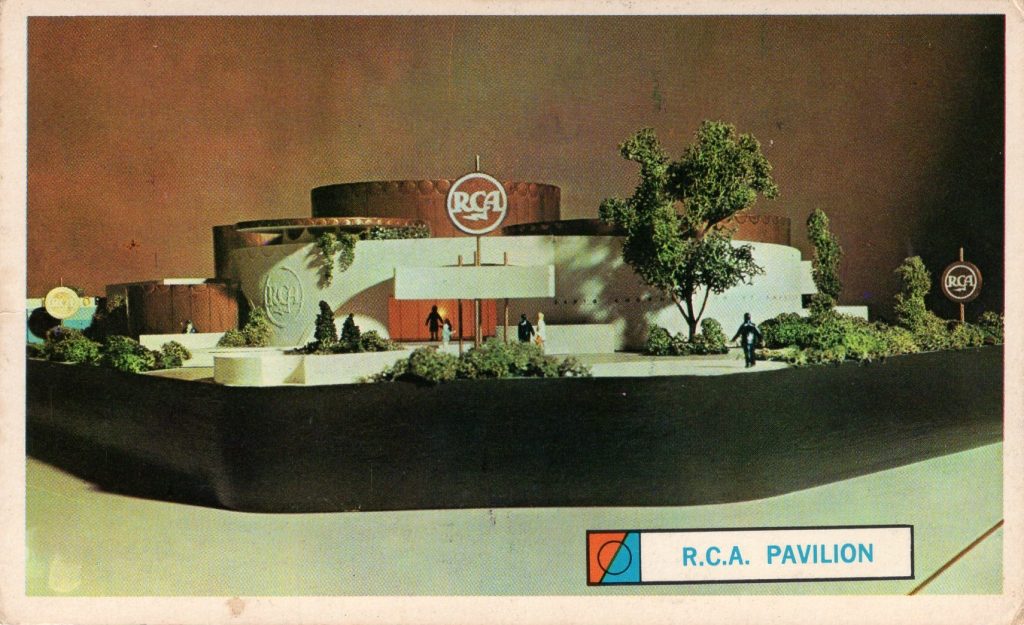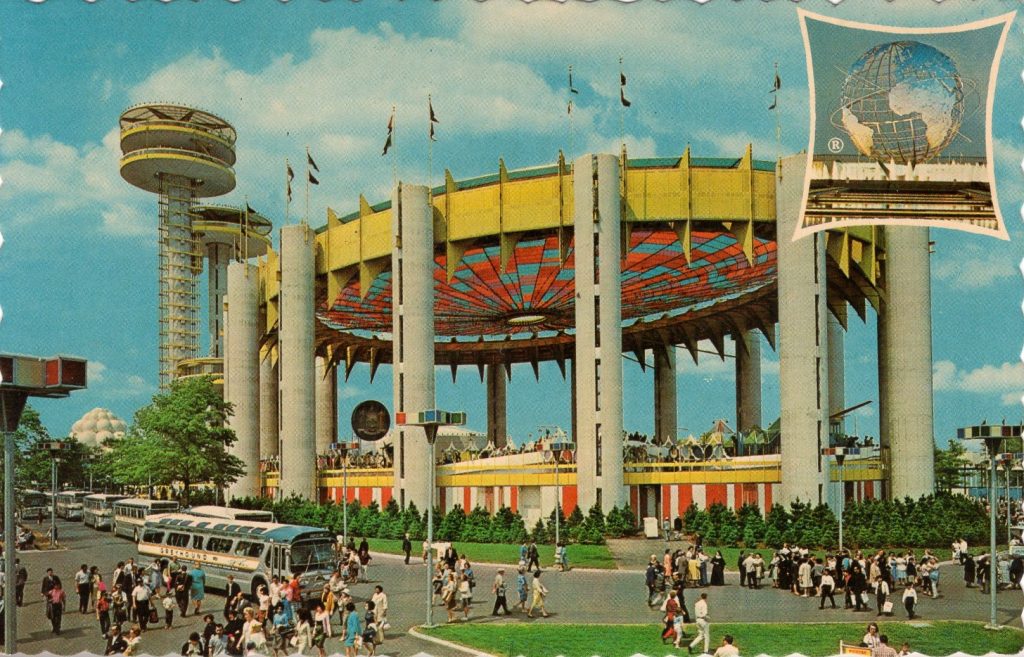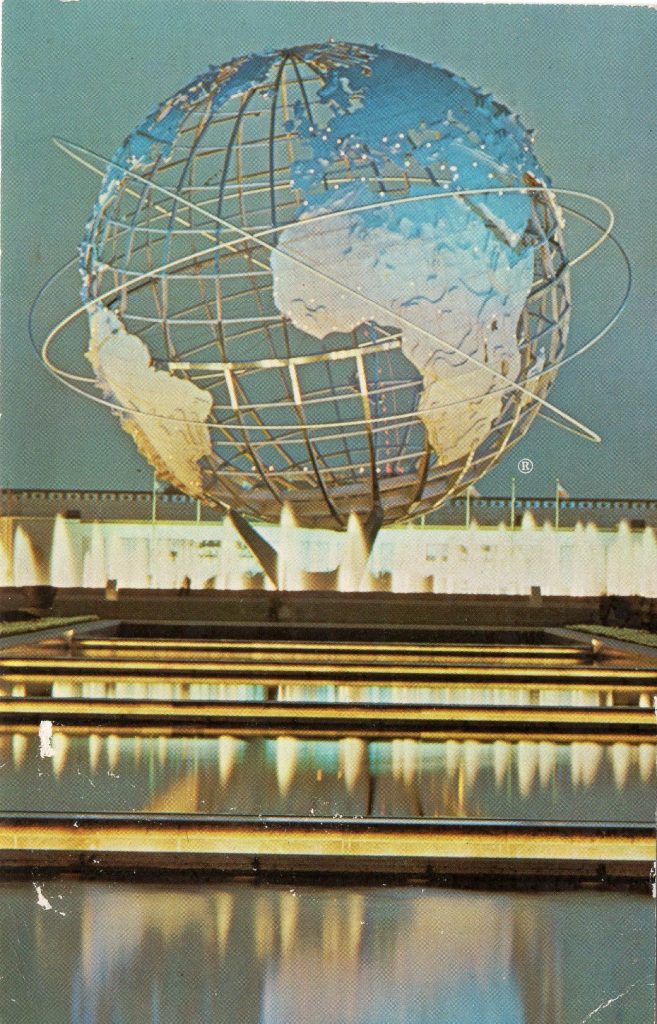Tony Crumbley
The 1964-1965
New York World’s Fair
In my high school years, I supported my habits by delivering daily newspapers. In 1964, the newspaper sponsored an opportunity to win a trip to the New York World’s Fair.
All a carrier had to do was fine new subscribers to the newspaper. I took on the task and was one of about ten young boys who got to ride on a bus and stay in the NY YMCA to visit the 1964 – 1965 New York World’s Fair. I remember much of that trip to this day, not old enough to be an adult but old enough to act like one.
The 1964-‘65 fair was held on the same site of the 1939–‘40 New York World’s Fair. It was in Flushing Meadows in the Borough of Queens. It was conceived in 1958 by a group of New Yorkers who formed a non-profit corporation of some 300 other people to provide the startup capital. They leased 600 acres from the city to build the park.
A commission appointed by President Eisenhower chose New York over competing locations as the site for an international exposition. The year 1965 was chosen for opening the fair as this was the 300th anniversary of the founding of New York as an English colony.
With the appointment of Robert Moses, a New York builder as president, the work began on planning and building the vast complex. The ground for the United States pavilion was broken in December 1962 by President John Kennedy.
The theme of the fair was “Man’s Achievements in an Expanding Universe.” A thirteen story 250-ton stainless steel sphere called the “Unisphere” was built as the Fair’s focal point.

With a total capital investment of over $1 billion, the fair was one of the largest undertakings in the history of international fairs. The fair was not, however, sanctioned by the Bureau of International Expositions (BIE) because it was planned to be for two years, and it leased land to build some exhibits.
This negatively impacted the fair as the BIE requested all members not to participate. Thus Canada, Australia, and most of Europe had no representation. Many countries such as Spain, China, Japan, Mexico, Thailand, and Greece did have a presence among the eighty nations, twenty-four states, and more than forty-five corporations that had exhibits or attractions at the fair.
The most popular attraction was the Vatican pavilion. Among the items on exhibit was the sculpture “Pieta” by Michelangelo. In October 1965, Pope John XXIII visited the fair.
Another popular exhibit which I still remember was the Belgian Village. There, I had “Bel-Gem Brussel Waffle,” a waffle with strawberries and whipped cream.
With the lack of involvement by major countries, the fair focused on corporate participation. United States companies sponsored many outstanding pavilions and rides.

The R.C.A. Pavilion was located just inside the main gate. It featured television communications and closed-circuit color TV. Visitors who saw themselves on color television enjoyed the experience because most of us were still watching black and white TVs at home.

The most memorable site was the General Motors building. The “Futurama” building was on eight-and one-half acres with 230,000 square feet of exhibit space. The attendees were seated in moving chairs that passed by elaborately detailed miniature 3D models of what future life might look like. Twenty-six million people took the ride through this exhibit.

In the transportation area the U. S. Royal Tire Company had a Ferris wheel ride. The wait time to ride the Ferris wheel was usually two hours. The tire was moved t0 Allen Park, in Detroit, Michigan.

The AMF Monorail ride offered a new experience in transportation of the future. Visitors rode three stories above ground in silent air-conditioned cars. There were seven two car trains within the park.

The New York State pavilion was a $6 million open air structure called “Tent of Tomorrow.” The pavilion was supported by sixteen 100-foot concrete columns from which a 50,000 square feet roof of polychrome tiles was suspended. In addition, there were three observation towers, one of which was the tallest structure in the fair.
Louisiana had a Bourbon Street pavilion. During its construction, the state had financial problems and filed for bankruptcy, but a private company bought the project and finished it. The pavilion included ten theater restaurants which served a variety of Creole food and a club called Jazzland which hosted jazz artists. The Bourbon Street Pavilion was reported to have the highest gross income of any commercial endeavor.

The Hall of Education was a building with a futuristic design. It included a 100 x 25 feet sculptured, multi-colored three-dimensional screen which introduced a wide range of subjects in a variety of educational fields.

Surrounding the main focal point of the fair, the “Unisphere” were 150 separate pavilions. With a construction cost of $1 billion, the fair needed to attract 70 million people to cover costs. Attendance fell short as only 51 million attended.
The fair showed a modest surplus by not repaying all of its investors’ money and was able to fulfill its obligation to restore Flushing Meadows as a park.
The “Unisphere” still stands today in the park along with a few other buildings that are museums and art facilities.
Many ideas and items seen at the fair, such as jet cars, have not become a part of our daily life. However, many things have become routine activities and everyday items. I can remember visiting a phone booth on the fair grounds and talking to a person on the other side of the fair as I watched the person on a small tv screen. Quite amazing at the time, but nearly an everyday event today.
Thank you for reminding me of those fun times. I grew up in Queens, two subway stops away from the park where the Worlds Fair was located, so I went there regularly. The ice skating rink in Flushing Meadow Park was left over from the 1939 Worlds Fair and was our regular skating place.
These postcards bring to life what was a magical experience. The Belgium Waffles were huge fluffy waffles served with strawberries and a ton of whipped cream.
My grandparents lived in Jackson Heights.
That’s where I grew up.
We moved from Ridgewood, Queens to NJ in 1949. I attended this fair at age 22.
Pope John XXIII died in 1963. It was Pope Paul VI who attended the fair.
That was the first time a Pope had ever visited America, and it was only for one day. It was quite a event!
I was 7 when we visited the fair. I remember seeing the Pieta and the Belgian Village, I wanted to live there! The waffles were amazing but my absolute favorite was the wonderful carousel. Thanks for reminding me, great article!
I visited the Fair for 6 days in June of 1964. I was nine. The General Electric Pavilion had one of the first uses of animatronic characters. The Bell Telephone Pavilion had booths where you could make group calls over a speaker phone. How high tech it seemed. Visiting the Fair was the highlight of my life up until that time.
Great article! Felt like a walk-through, wish I could have been there. Thanks.
I visited the New York World’s Fair just after its opening in 1964 and again just before its closing in 1965. One of my goals in visiting was to buy up as many different post cards as would be available, thinking that they would be valuable “down the road.” I did buy the cards; but, for the most part, they did not become valuable, as such. Dexter Press was officially sanctioned as the purveyor of post cards of the 1964-65 New York World’s Fair. However, Plastichrome of Boston and Progressive of NYC also got involved in producing post cards, which,… Read more »
Thank you for posting this and sparking some wonderful memories. My family lived a 35-40 minute drive from the fair (in good traffic, which it seldom was), in Southern Westchester County. I often say that event warped me for life. It certainly sparked many of our collective imaginations for a “FUTURE” that has in many ways fallen short, and in others has gone far beyond what any of us might have imagined. We visited the fair at least a half dozen times in both of the years it was opened. I was 6 and 7 years old, then, and remember… Read more »
I was doing some research a few years back on the question of publication and distribution of NYWF 64-65 potcards. I grew up between the Lower East Side of Manhattan and Forest Hills, Queens myself, attended the Fair a few times, loved those waffles and the Spanish Pavilion. My research was helped along by a scarce copy of Tom Dexter’s autobiography, shared by his daughter Josephinr Dexter Schwartz, whom I also interviewed . Unlike the 39-40 Fair where just about everybody was given rights to publish postcards – and they did – the Commission decided to award “official” rights to… Read more »